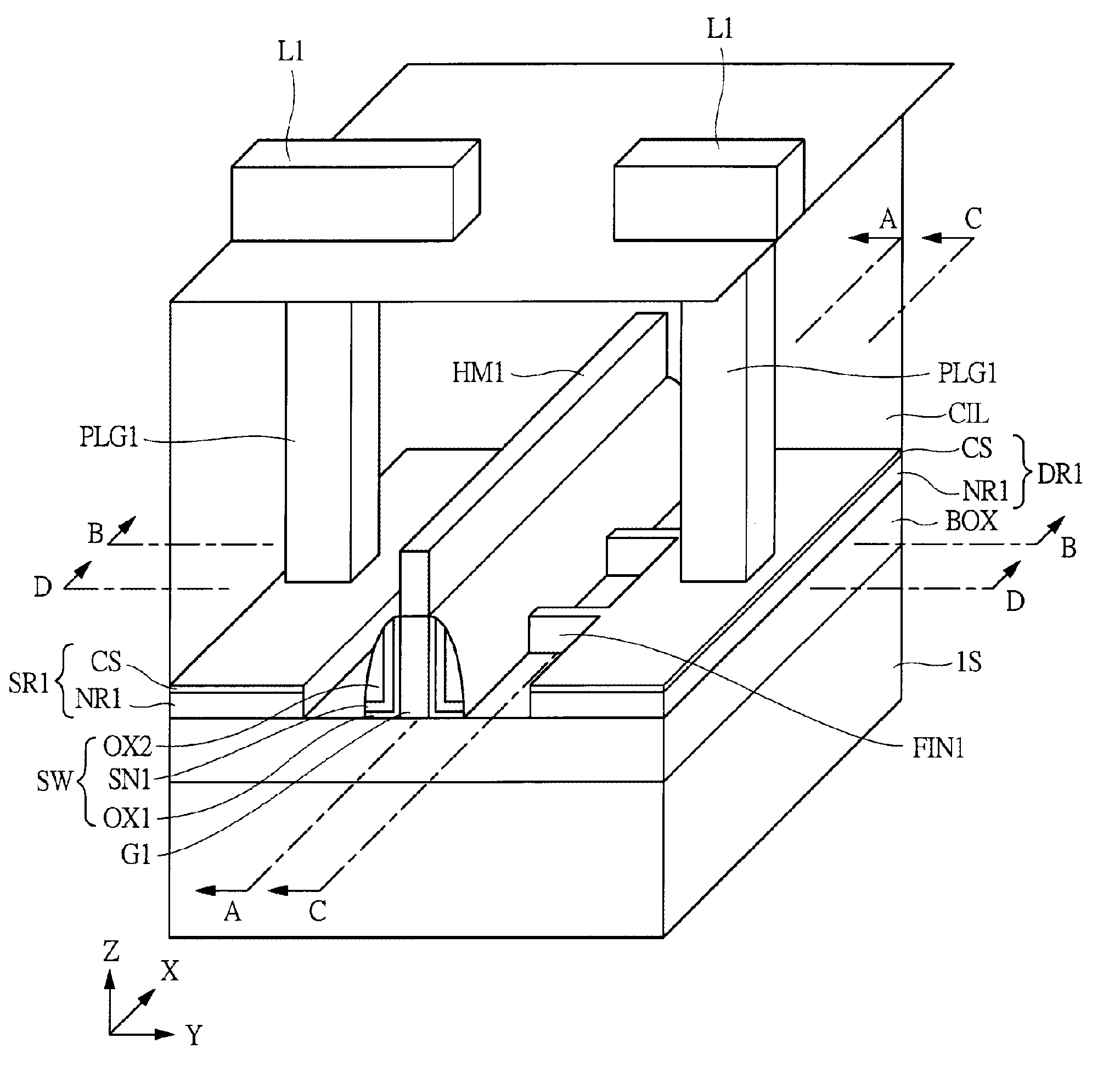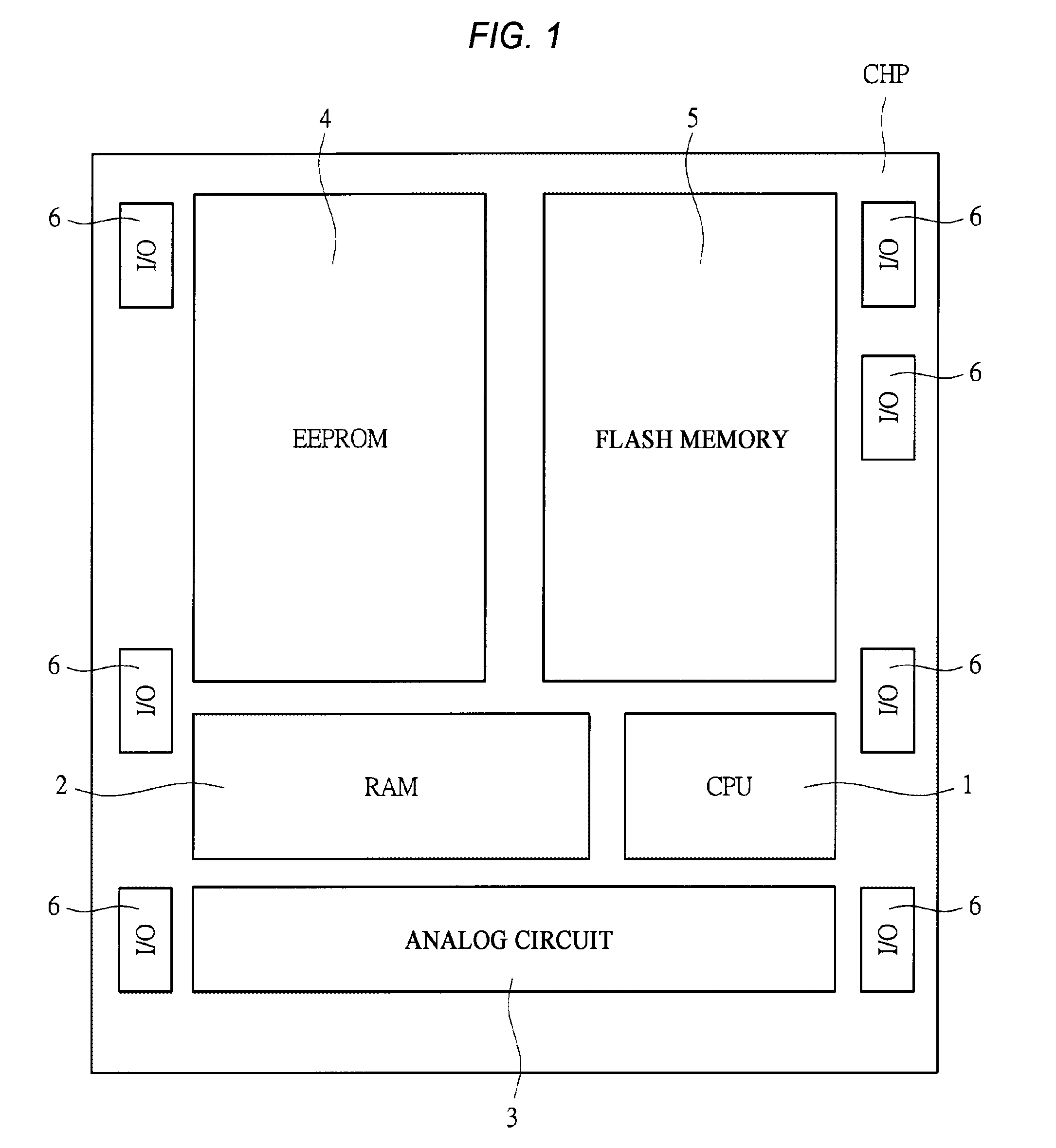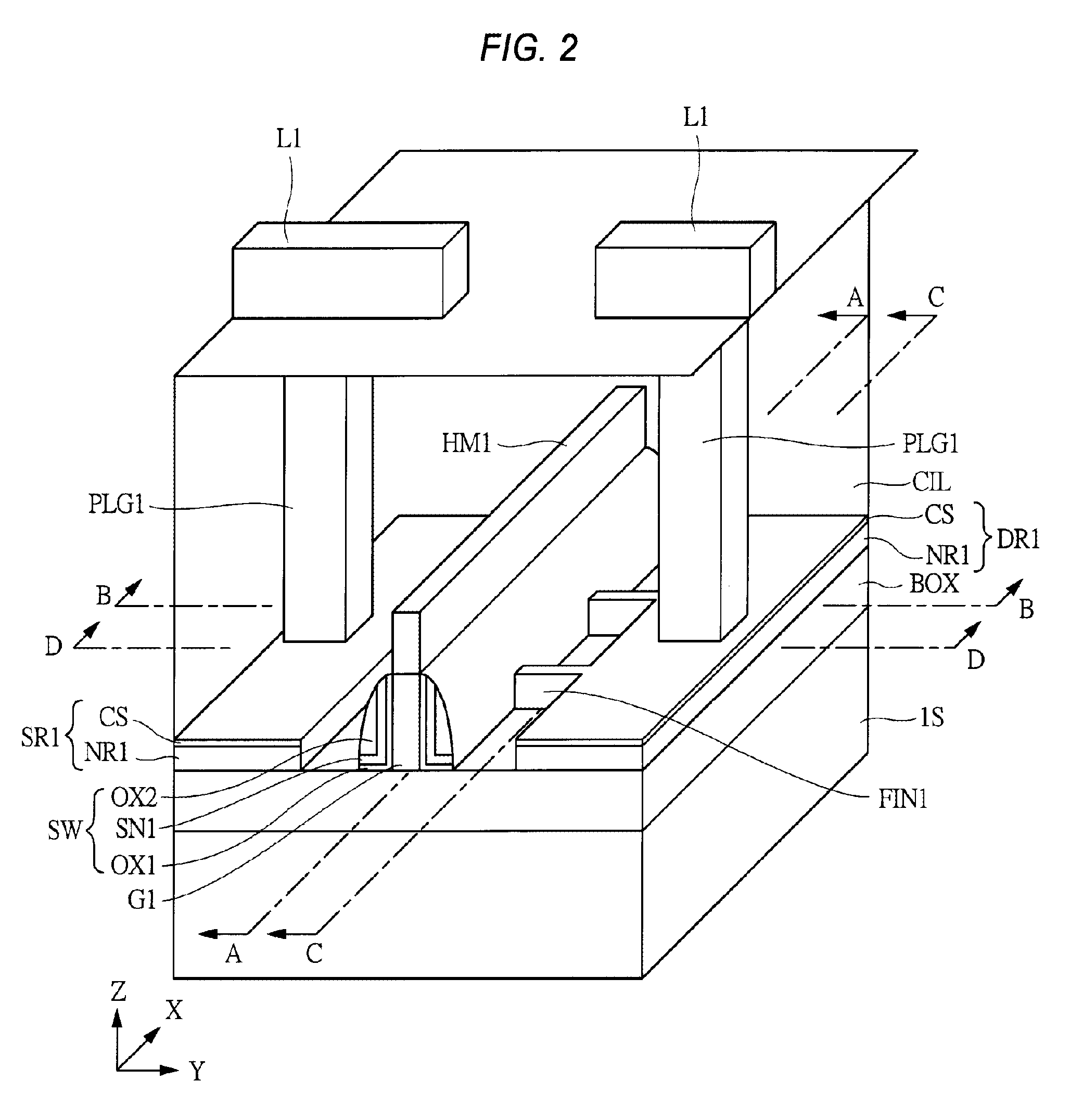Semiconductor device and method of manufacturing the same
a technology of semiconductor and spherical fin, which is applied in the direction of semiconductor devices, transistors, electrical devices, etc., can solve the problems of difficult to meet, difficult to perform a uniform and high concentration implantation of impurities into the side surface of the fin, and the sidewall becomes a hindrance factor, etc., to achieve the effect of improving the parasitic resistan
- Summary
- Abstract
- Description
- Claims
- Application Information
AI Technical Summary
Benefits of technology
Problems solved by technology
Method used
Image
Examples
example 1
[0059]A semiconductor device in the present Example 1 will be described with reference to the drawing. Firstly, the layout configuration of a semiconductor chip, in which a system including a microcomputer is formed, is described. FIG. 1 is a drawing showing the layout configuration of a semiconductor chip CHP in Example 1. In FIG. 1, the semiconductor chip CHP has a CPU (Central Processing Unit) 1, a RAM (Random Access Memory) 2, an analog circuit 3, an EEPROM (Electrically Erasable Programmable Read Only Memory) 4, a flash memory 5 and an I / O (Input / Output) circuit 6.
[0060]The CPU (the circuit) 1 is also referred to as a central processing unit, which corresponds to the heart portion of computers and the like. The CPU 1 reads out an instruction from a memory device and decodes it, and, on the basis of it, performs various calculation or control.
[0061]The RAM (the circuit) 2 is a memory capable of randomly reading out memory information, that is, reading out stored memory informati...
example 2
[0166]In the Example 1, the example, in which the sidewall SW is formed from the laminated film including the silicon oxide film OX1, the silicon nitride film SN1 and the silicon oxide film OX2, is explained, but, in Example 2, an example, in which the sidewall SW is formed from the silicon nitride film, silicon oxide film and silicon nitride film, is explained.
[0167]FIG. 32 is a drawing showing the positional relation between the fin FIN1 and the gate electrode G1 constituting the FINFET. As shown in FIG. 32, the fin FIN1 extends in the X direction, but, on the other hand, the gate electrode G1 extends in the Y direction. In addition, the gate electrode G1 is disposed in a region intersecting the fin FIN1 so as to cross over the fin FIN1. On side walls on both sides of the gate electrode G1 extending in the Y direction, the sidewall SW is formed. In Example 2, the sidewall SW is constituted by the silicon nitride film SN1 formed over the side wall of the gate electrode G1, the sili...
example 3
[0173]In the above Example 1, as shown in FIGS. 27 to 29, after removing the silicon oxide film OX1 formed in the lowermost layer and forming the sidewall SW, the high concentration n-type impurity diffusion regions NR1 and NR2, and the deep n-type impurity diffusion region NR3 are formed. That is, after removing the silicon oxide film OX1, the ion implantation method is practiced to form the high concentration n-type impurity diffusion regions NR1 and NR2, and the deep n-type impurity diffusion region NR3.
[0174]In contrast, in Example 3, an example, in which the silicon oxide film OX1 formed in the lowermost layer is left and the ion implantation method is practiced to form the high concentration n-type impurity diffusion regions NR1 and NR2, and the deep n-type impurity diffusion region NR3, is explained.
[0175]As shown in FIG. 27, the silicon oxide film OX1 in the lowermost layer constituting the sidewall SW is not removed but left. After that, via the left silicon oxide film OX1,...
PUM
| Property | Measurement | Unit |
|---|---|---|
| thickness | aaaaa | aaaaa |
| thickness | aaaaa | aaaaa |
| thickness | aaaaa | aaaaa |
Abstract
Description
Claims
Application Information
 Login to View More
Login to View More - R&D
- Intellectual Property
- Life Sciences
- Materials
- Tech Scout
- Unparalleled Data Quality
- Higher Quality Content
- 60% Fewer Hallucinations
Browse by: Latest US Patents, China's latest patents, Technical Efficacy Thesaurus, Application Domain, Technology Topic, Popular Technical Reports.
© 2025 PatSnap. All rights reserved.Legal|Privacy policy|Modern Slavery Act Transparency Statement|Sitemap|About US| Contact US: help@patsnap.com



